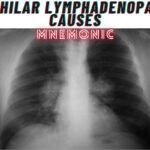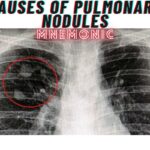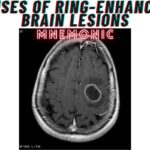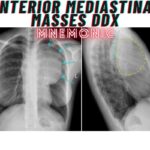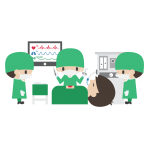If you are working at a hospital or taking an OSCE exam i.e USMLE Step 2 CS or MRCP PACES — you can encounter patients with chest-associated symptoms. Diseases involving the chest (or thorax) can manifest themselves as Chest pain or discomfort, shortness of breath (SOB), pressure or squeezing around the chest, cough or indigestion. All of these are high-risk symptoms so you have to be REALLY careful because your patient is more likely to suffer a heart attack. You cannot miss the cause of chest pain. An immediate diagnosis could help save your patient’s life but if you miss and your patient leaves the hospital, they could die by undergoing a more severe episode of Myocardial Infarction.

In this article, we’re going to share with you chest pain differential diagnosis mnemonic (DDx Mnemonic) so that you remember all high-risk, life-threatening causes of chest pain and help save your patient’s life when prompted in emergency situations.
Chest Pain Differential Diagnosis Mnemonic
Alright, so when you’re presented with chest symptoms (as mentioned above), you have to immediately ask, “Who is your PAPPA?”. 😀 PAPPA is one the best mnemonics to help memorize chest pain differential diagnosis (DDx). You will not miss any high-risk causes if you remember this:
Chest Pain DDx Mnemonic: “Who is your PAPPA?”
BREAKDOWN:
| P | Pericarditis | Swelling of the pericardium. |
| A | Acute coronary syndrome (or acute myocardial infarction) | ACR includes unstable angina, non—ST-segment elevation myocardial infarction, and ST-segment elevation myocardial infarction. |
| P | Pneumothorax | It is the abnormal collection of air in the pleural space. |
| P | Pulmonary embolism | It is the blockage of pulmonary arteries by a substance (more commonly a disseminated blood clot) which originates from elsewhere in the body and is carried to the lungs through the blood stream. |
| A | Aneurysm (also: Angina/ Aortic dissection) | It is the excessive and localized swelling of an artery wall. |
P.S Please don’t end-up asking your patient, “Who is your PAPPA?” during the examination. 😀

We hope you find this chest pain differential diagnosis mnemonic useful! 🙂
HAPPY LEARNING! 🙂
Did we miss something? Please let us know what you think by using the comment box below. 🙂


![How to Remember Southern, Northern, and Western Blot Tests [Mnemonic] How to Remember Southern, Northern, and Western Blot Tests](https://www.medicosrepublic.com/wp-content/uploads/2025/06/How-to-Remember-Southern-Northern-and-Western-Blot-Tests-218x150.jpg)
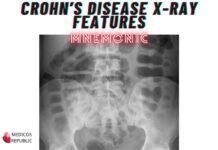
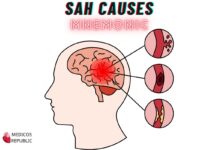
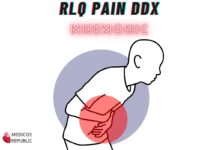
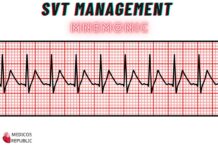
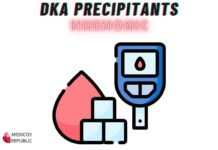

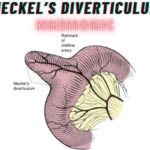
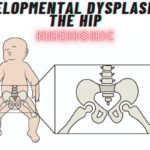

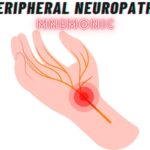

![Gerstmann Syndrome Features Mnemonic [Easy-to-remember] Gerstmann Syndrome Features Mnemonic](https://www.medicosrepublic.com/wp-content/uploads/2025/06/Gerstmann-Syndrome-Features-Mnemonic-150x150.jpg)
![Cerebellar Signs Mnemonic [Easy to remember] Cerebellar Signs Mnemonic](https://www.medicosrepublic.com/wp-content/uploads/2025/06/Cerebellar-Signs-Mnemonic-150x150.jpg)
![Seizure Features Mnemonic [Easy-to-remember] Seizure Features Mnemonic](https://www.medicosrepublic.com/wp-content/uploads/2025/06/Seizure-Features-Mnemonic-1-150x150.jpg)

![Recognizing end-of-life Mnemonic [Easy to remember]](https://www.medicosrepublic.com/wp-content/uploads/2025/06/Recognizing-end-of-life-Mnemonic-150x150.jpg)

![Multi-System Atrophy Mnemonic [Easy-to-remember] Multi-System Atrophy Mnemonic](https://www.medicosrepublic.com/wp-content/uploads/2025/06/Multi-System-Atrophy-Mnemonic-150x150.jpg)
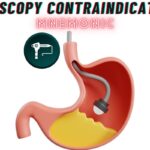
![How to Remember Southern, Northern, and Western Blot Tests [Mnemonic] How to Remember Southern, Northern, and Western Blot Tests](https://www.medicosrepublic.com/wp-content/uploads/2025/06/How-to-Remember-Southern-Northern-and-Western-Blot-Tests-150x150.jpg)

